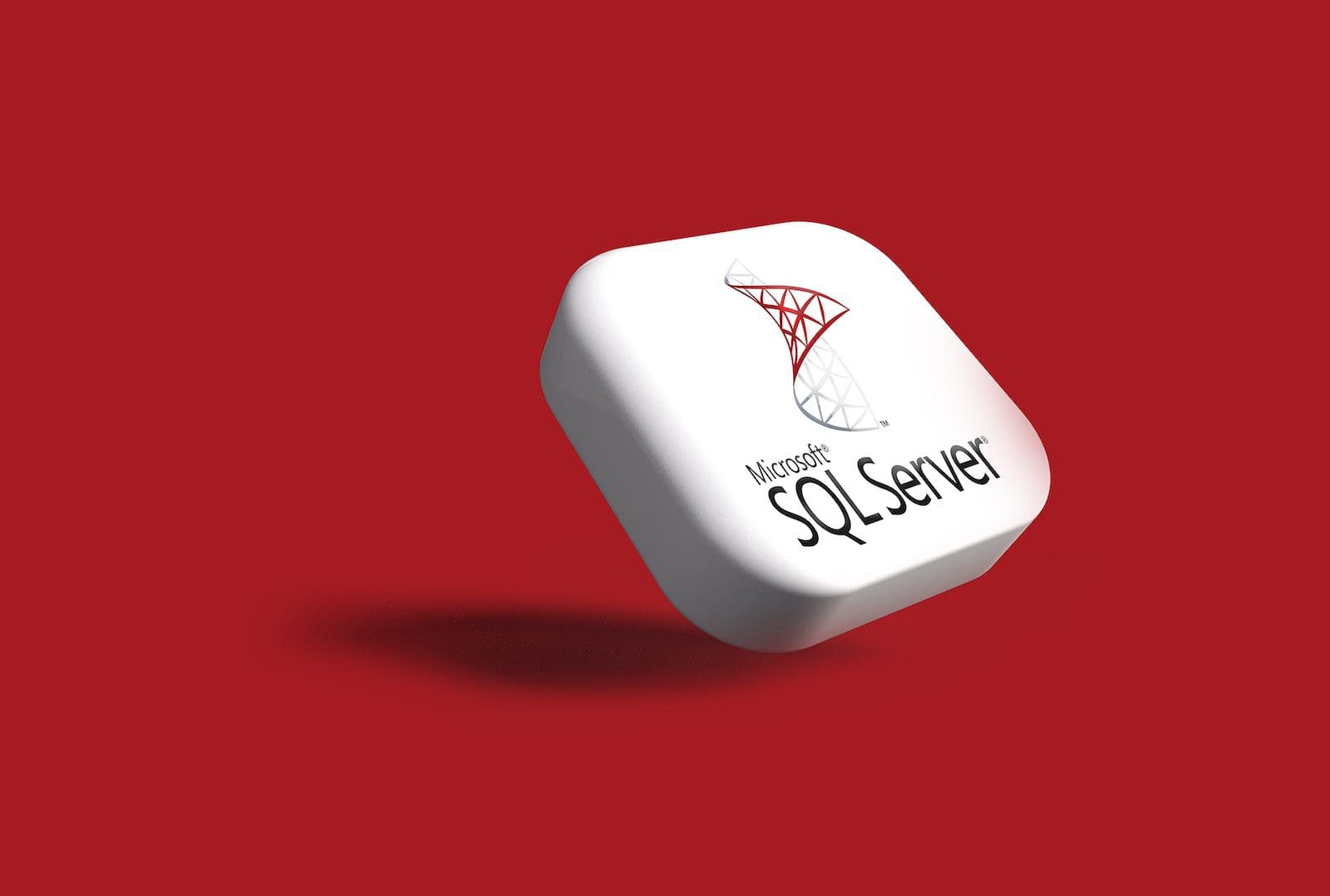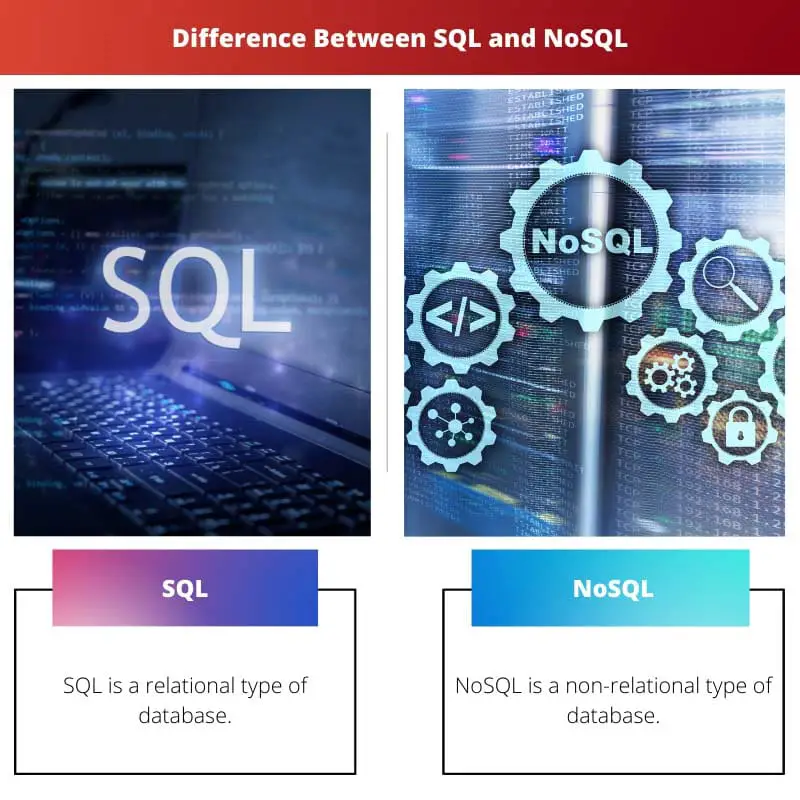When it comes to data structure usage, there needs to be a decision between choosing relational and non-relational data structure that influences the entire system and structural development, which gives birth to the differences between SQL and NoSQL as per the data structure requirement and its database capabilities.
Key Takeaways
- SQL is a traditional, relational database management system that stores structured data in a tabular format.
- On the other hand, NoSQL is a non-relational database management system for storing unstructured and semi-structured data.
- SQL is used for complex data analysis and manipulation, while NoSQL handles large volumes of data.
SQL vs NoSQL
The difference between SQL and NoSQL is that they are known as relational and non-relational database structures, respectively, that are used in different modes for implementing and manipulating data. The data storage and management systems are highly biased by these terms for their structure and arrangement, which helps maintain the data structure per requirements and needs.

SQL implements relational databases and stands for Structured Query Language, which is exclusively used to define and manipulate data that is stored.
Due to its variations, versatility, and usage, it takes the upper hand in being a safe choice for derivative data interpretation. It uses predetermined schemes to define your data structure and focuses on scaling quick and fast queries.
This structured data through SQL makes programming easier for sustained developers.
Comparison Table
| Parameter of Comparison | SQL | NoSQL |
|---|---|---|
| Type | SQL is a relational type of database. | NoSQL is a non-relational type of database. |
| History | Developed in the early 1970s for new data modification. | Developed in the late 2000s to immaculate the purpose. |
| Scalability | SQL has vertical scalability. | NoSQL is non-vertical scalability. |
| Main Purpose | To avoid and reduce the chances of data duplication in the structure. | To focus on scaling and allow rapid application change in the data structure. |
| Examples | Oracle, Microsoft SQL | MongoDB and CouchDB |
What is SQL?
SQL in the data world stands for Standard Query Language, which is a programming language standardized to establish and arrange manageable relational databases and enable various operations over the data stored.
SQL was brought in to work around the time of 1970, but it came in handy for both data administrators and developers. These data developers write data integration scripts and analyze the data to set up and run for standardized queries.
There are other various uses of SQL in database work. It modifies database tables associated with the index structures where it can edit data stored, like adding and deleting several rows and columns, and can also retrieve subsets of information adorned in the database structure.
Other SQL statements include minimal uses and features like selecting the data, inserting data, updating requirements, and so on.
When it comes to database interpretation, there is no other query language more appropriate than SQL, and it has been a standard programming language since 1970, which took flight, especially in the 1980s.
Each SQL is categorized and is used to edit the data stored, starting from customization and data entry.

What is NoSQL?
When the database is about not involving SQL, it comes down to not only SQL or NoSQL. NoSQL stores data in the format of the document and, unlike SQL, not in any relational tabular form.
The documents are further subdivided into various flexible models of data that are stored.
The type of documents where NoSQL stores data is JSON documents which are more flexible and scalable and power the capabilities to respond to rapid changes that may occur during data management.
There are various types of NoSQL that include strained document databases, key-value stores, wide-column databases, and graphic databases, which influence the data management or the data stored.
Built in the 2000s, NoSQL became more popular and convenient for people because customer experience is more vital and necessary in the world of monumental change.
NoSQL was built to support large numbers of users who are coinciding, always available with no stop time, and delivers a highly responsive experience to its customers, making it very eloquent to use among its users.
Moreover, NoSQL is known for its rapid adaptation to any monumental changes that occur with frequent updates and new features.
They even can handle unstructured data in their management system while building major interactive applications for users and customers.

Main Differences Between SQL and NoSQL
- The SQL or Structured Query Language is a relational database in data management, whereas NoSQL or “not only SQL” is more of the non-relational database in the management system.
- SQL uses its properties of structured data query language and has variations in its schemes that are predefined, whereas NoSQL does not have predefined schemes but more dynamic ones for its unstructured data.
- According to scalability, SQL has a vertical scale, whereas NoSQL has a horizontal scale.
- SQL mainly focuses on the table-based format to store data, whereas NoSQL stores its data in the format of documents, key-value graphs, etc.
- SQL works better with multi-row data or transactions, whereas NoSQL works better with unstructured data in the format of JSON documents.

- https://ieeexplore.ieee.org/abstract/document/6625441/
- https://ieeexplore.ieee.org/abstract/document/6822123/

Wow, this is very informative! I appreciate the clear comparison between SQL and NoSQL and how they differ in structure and purpose.
I agree, the breakdown of the differences is very enlightening.
Thank you for the helpful explanation. I’ve always wondered how SQL and NoSQL differ.
I find the comparison between SQL and NoSQL in this article very informative. It has helped me understand their differences better.
I agree, the comparison has been very well-presented and explained.
Yes, the comparison is very useful for understanding the intricacies of SQL and NoSQL.
I appreciate the detailed comparison between SQL and NoSQL and how they differ in terms of their structure and purpose.
Yes, this post provides a comprehensive breakdown of the two database systems. Very well-written.
This is a very insightful article. The comparison between SQL and NoSQL is well-explained.
I agree, the detailed comparison really helps in understanding the differences between the two.
This post does a great job of outlining the differences between SQL and NoSQL and how they are used in data management.
I couldn’t agree more. The comparison between the two is very well-done.
The detailed comparison between SQL and NoSQL is quite enlightening. I’ve gained a better understanding of their uses.
Absolutely, the breakdown of their uses and differences is very informative.
I appreciate the detailed comparison between SQL and NoSQL, it has provided a clear understanding of their differences.
Agreed, the comparison has been very informative and has clarified a lot of doubts.
Yes, the detailed comparison is very helpful in understanding the complexities of SQL and NoSQL.
This post offers a clear and comprehensive comparison between SQL and NoSQL. The differences are well-summarized.
Absolutely, I’ve learned a lot about the differences between SQL and NoSQL from this article.
This is a very informative post. The comparison between SQL and NoSQL is very well-detailed and easy to understand.
I agree, the post presents a clear comparison which makes it easy to understand the differences.
The comparison between SQL and NoSQL is well-elaborated in this article. I’ve learned a lot about the differences between the two.
I couldn’t agree more. The explanations are very clear and detailed.
Absolutely, the detailed comparison is very insightful and educational.